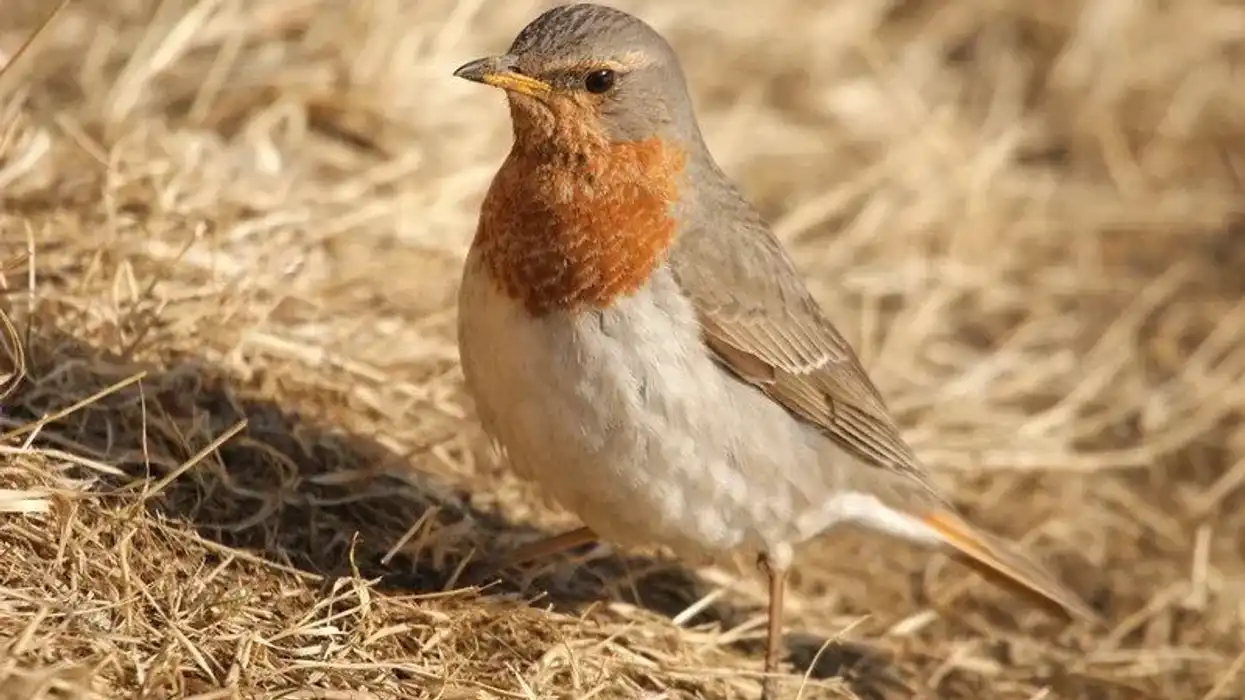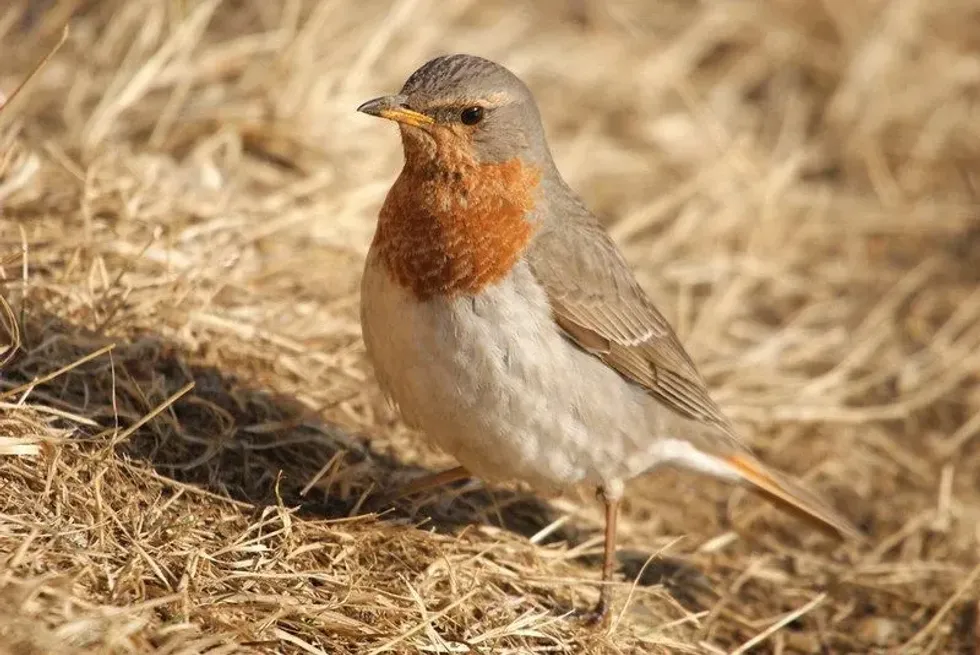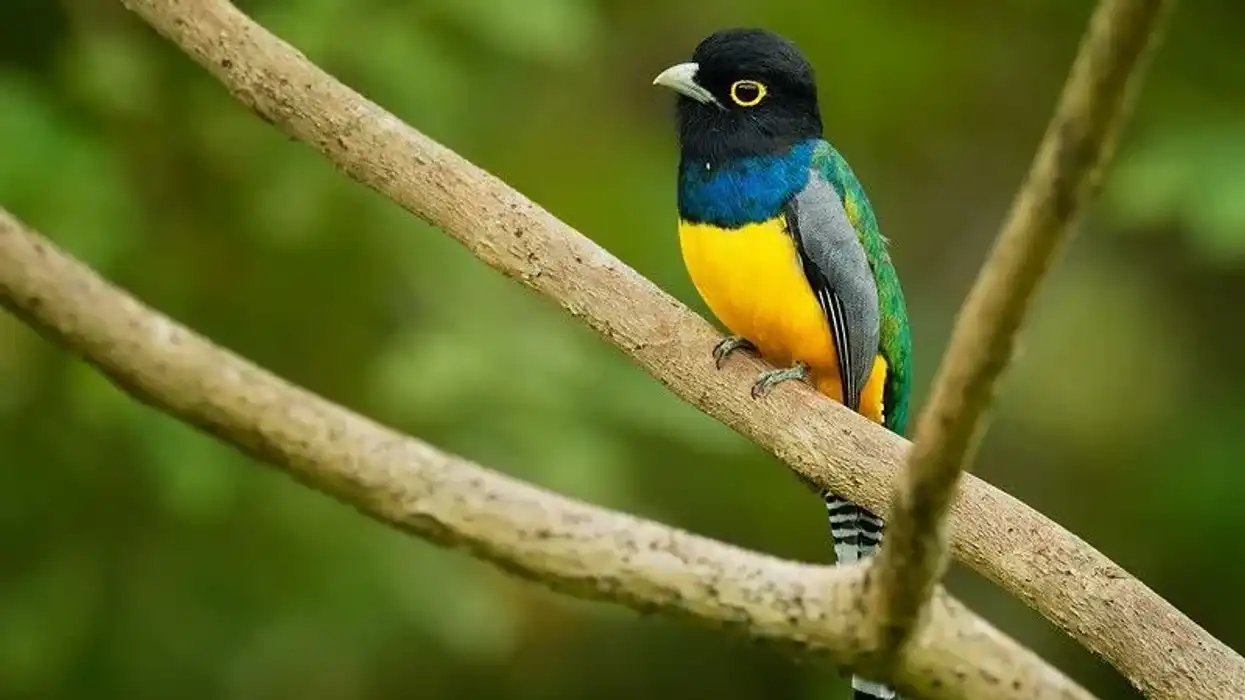The red-throated thrush (Turdus ruficollis) is a bird species in the thrush family.
This bird in the order Passeriformes is sometimes regarded as a subspecies of species called dark throated thrush. The other subspecies under the species dark throated thrush is named black-throated thrush.
However, recent findings have shown that the subspecies red-throated thrush and subspecies black-throated thrush are separate species each. The red-throated thrush is a migratory species, known to be Palearctic and the bird is known for breeding in East Siberia to North Manchuria.
The birds winter in West China, northeastern India, and Myanmar. The range of the bird species overlaps with black-throated thrush that is known for breeding mostly in western areas.
With reddish underwings and a plain grey back, the red-throated thrush is considered a large-sized thrush. Adult male species are seen with a red throat while females and young birds of the species have black-streaked underparts and lack the bib.
In Western Europe, the bird species is quite a rare vagrant. The atrogularis species have a black-colored chest.
The scientific name was given by Pallas in 1776. The bird is also known by the names redthroated thrush, red-necked thrush, rufous-throated thrush, and many more. The identification of the birds is quite easy, and we will learn about them more about the bird called Grive à gorge Rousse in French.
Red-Throated Thrush Interesting Facts
What type of animal is a red-throated thrush?
Red-throated thrush is a passerine bird of the family of thrushes.
What class of animal does a red-throated thrush belong to?
The red-throated thrush (Turdus ruficollis, Pallas 1776) falls under the class of Aves in the kingdom of Animals. The order is Passeriformes. It is part of the family Turdidae.
How many red-throated thrushes are there in the world?
The population of the species is not known. But as the conservation status of the species is the least concern and you can see the rufous colored bird breeding and spending the winter in many different places, there are currently no problems affecting the species.
Where does a red-throated thrush live?
The red-throated thrush (Turdus ruficollis) is found in a range of terrestrial habitats, which include shrubland, forest, grassland, and more.
What is a red-throated thrush's habitat?
The red-throated thrush range map includes native extant in China where the bird resides. You will find the birds breeding in Mongolia, Eastern Asian Russia, Central Asian Russia, and migrate to Afghanistan, Myanmar, Bhutan, Nepal, and Northeast India.
The bird is also extant and vagrant in Austria, Azerbaijan, France, Germany, Belgium, Bulgaria, Czechia, Denmark, Finland, Greece, Italy, Japan, Latvia, Netherlands, Sweden, Taiwan in the Province of China, Norway, Poland, Portugal, Spain, Thailand, and the United Kingdom.
The red-throated thrush migrate quite a lot during the breeding and non-breeding season.
Who do red-throated thrushes live with?
They mostly stay in pairs all their lives.
How long does a red-throated thrush live?
The life span of these birds is not known. They probably live around two to four years like all other thrushes in the world.
How do they reproduce?
The birds make the nest in trees, or on low stumps quite near the ground. As the male and female birds make the nest of grass stems and leaves, the bird species breed to produce five to six eggs. The incubation period is 11-12 days and is done by the female only.
This bird breeds further east than the black-throated thrush, however, their range still overlaps. It is hard to identify sometimes.
What is their conservation status?
The red-throated thrush (Turdus ruficollis) is categorized as Least Concern by the IUCN Red List. There is no danger to the species currently, however, identification is sometimes hard as the ranges overlap with the other subspecies.
Although many consider red-throated thrush endangered, it is quite common throughout the range. See some near your forests as you might them chirping about.
Red-Throated Thrush Fun Facts
What do red-throated thrushes look like?
The red-throated thrush (Turdus ruficollis) is medium-sized and quite bulky. The head and the upper parts are colored pale-grey to umber-brown and the chest and throat coloration is dark. The underbody is colored dull white and the underwing is rufous-buff.
An adult male of the atrogularis species has a black-colored chest and black-brown tail while the eastern race or the real red-throated thrush has a dull reddish chest and reddish tail. The atrogularis species is now black-throated thrush.
The red-throated thrush appearance and size are similar to most thrush species like the dusky thrush, song thrush, and more.
How cute are they?
The red-throated thrush (or as you call them Grive à gorge rousse in French) is quite cute with minimal and distinctive coloration on the body.
How do they communicate?
The red-throated thrust song is quite melodious. They mostly communicate by sound.
The movement is similar to the song thrush as the red-throated thrush moves on the ground by pausing and hopping.
How big is a red-throated thrush?
The length of these birds is up to 9.84 in (25 cm).
The red-throated thrush wingspan is up to 15.74 in (40 cm).
How fast can a red-throated thrush fly?
The speed is not known, however, they are known to be fairly fast as they migrate in winter and breeding season.
How much does a red-throated thrush weigh?
The weight of Grive à gorge Rousse (the French name for red-throated thrush) is not known.
What are the male and female names of the species?
A red-throated thrush male and a red-throated thrush female are both known by the common name and the scientific name.
Many even considered the red-throated thrush a subspecies of dark-throated thrush along with the black-throated thrush.
What would you call a baby red-throated thrush?
A baby of this bird is called a chick or young.
What do they eat?
These birds feed on invertebrates and berries. The birds feed near streams feeding on aquatic invertebrates.
Are they dangerous?
The Grive à gorge Rousse bird or the red-throated thrush is not considered dangerous. The bird is not harmful, even not many Passeriformes birds are harmful.
Would they make a good pet?
They are not considered a pet.
Did you know...
Did you know that the bird is called by different names all over the world in different dialects? In French, the bird is known as Grive à gorge Rousse, Rotkehldrossel in German, Roodkeellijster in Dutch, and so on.
They are a fully migratory species.
The color of the belly makes the red-throated thrush unique and it is easier to differentiate between other similar species.
Why are red-throated thrushes endangered?
The red-throated thrush (Turdus ruficollis) are not considered endangered now and are found quite commonly in all of its range.
Why are red-throated thrushes important?
These birds help to maintain the ecological balance as they are found in many parts of the world.
*We've been unable to source an image of a red-throated thrush and have used an image of a thrush instead. If you are able to provide us with a royalty-free image of red-throated thrush, we would be happy to credit you. Please contact us at hello@kidadl.com










